On This Day…June 4th.
There’s not much left one can say about Midway. My approach to this singular conflict is try and set up this first day of battle proper, and let the images tell the rest of the tale.
Early on June 4th, Vice Admiral Nagumo launched his attack on Midway Island itself, consisting of 36 Aichi D3A (‘Val’) dive bombers and 36 Nakajima B5N (‘Kate’) torpedo bombers, escorted by 36 Mitsubishi A6M Zero fighters. Although inflicting serious damage and downing many US fighters, the airfield crucially remained serviceable.
Returning from Midway actual, the Japanese aircraft spotted the American fleet and as a result there was a delay in deciding tactics, turning aircraft over, Nagumo vacillating between finishing off the island and attacking the US task force.
The USS Yorktown (below) with her air group seen on the flight deck, early morning 4 June 1942, following recovery of her morning search and respotting the flight deck with the strike group. Several Dauntless scout bombers are on deck alongside and forward of the island, with many other planes densely parked aft. Douglas TBD-1 Devastator torpedo bombers are at the flight deck's rear.
While Nagumo was caught between two targets and showing a degree of indecision, the American admirals Spruance and Fletcher had only one focus. The air groups attacked the Kaga and Akagi.
The US aircraft attacks at Midway met initially with mixed results. The torpedo squadron VT-8 was infamously all but wiped out. Radioman 2nd Class Harry H. Ferrier of VT-8 served as a radio operator and lower gunner on a Grumman Avenger...
“On the second firing pass by the attacking Zeros, our turret gunner, Manning, was hit and his turret put out of action,” recounted Ferrier. “The sight of his slumped and lifeless body startled me.”
“Quite suddenly, I was a scared, mature old man at 17. I had never seen death before, and here in one awesome moment my friends and I were face-to-face with it. I lost all sense of time and direction but huddled by my gun hoping for a chance to shoot back.”
The torpedo bombers made no hits and Ferrier’s aircraft was the only one of Torpedo Squadron 8 to survive. Only four of 41 American carrier torpedo planes returned.
The last Devastator of U.S. torpedo squadron VT-8, T-16 - flown by Lt. Cmdr. John C. Waldron with Horace Franklin Dobbs, CRMP, in the rear seat, taking off from the USS Hornet (CV 8) . This still was taken from a film made by John D. Ford after the battle.
Torpedo Squadron Eight (VT-8) pilots photographed on board the Hornet in mid-May - just a couple of weeks before the Battle of Midway. They are (Front row, kneeling, left to right): Ensign Harold J. Ellison; Ensign Henry R. Kenyon; Ensign John P. Gray; Ensign George H. Gay, Jr.(circled); Lt. (j.g.) Jeff D. Woodson; Ensign William W. Creamer; AP1C Robert B. Miles. (Back row, standing, left to right): Lt. James C. Owens, Jr.; Ensign E.L. Fayle; Lt. Cmdr. John C. Waldron, Squadron Commanding Officer; Lt. Raymond A. Moore; Ensign Ulvert M. Moore; Ensign William R. Evans; Ensign Grant W. Teats; Lt. (j.g.) George M. Campbell.
Lt. (Jg.) Norman ‘Dusty’ Kleiss and his radio operator/gunner were in one of the Dauntless dive bombers who had a very different experience (due to the Zeros being preoccupied with the torpedo squadron) attacking the aircraft carrier Kaga...
“The situation was a carrier pilot's dream. No anti-aircraft, all three (Japanese) carriers heading straight into the wind,” recalled Kleiss. “Earl Gallaher's 500 pound bomb hit squarely on a plane starting its take-off…Immediately the whole pack of planes at the stern were in flames 50 feet high…My bombs landed exactly on the big red circle forward of the bridge.”
“Seconds later the flames were 100 feet high.” Kleiss continued, “Ten minutes after the attack I saw a large explosion amidships on the Kaga. Rockets of flame, pieces of steel bolted upward to about three or four thousand feet high.“
At around 14:30, Daniel Sheedy’s Wildcat (above) from the Yorktown (one of Jimmie Thatch’s formation from VF-3) came in hot on the USS Hornet after taking damage from a Zero. Sheedy was wounded in the leg and landed hard, which collapsed the undercarriage and set off the six .50 cal machine guns (you can see the smoke from , killing 5 crew and injuring 20 more.
Incredibly, the photo below was taken just an hour later. Another Yorktown Wildcat lands heavy, setting off the guns. In this instance, the F4F was heading straight down the deck and no-one was harmed. Again, you can see the smoke from the .50 cals on the wings.
Of course, the Yorktown was lost (below). The battle at Midway in many ways is the stuff of legend, where each small detail could be taken apart, analysed, and ‘understood’. It is a strange synchronicity that sees Dunkirk, Midway, and D-Day all happening at the same juncture of time. Examine each as you will, but in each conflict, providence, inspiration, strategy and blind luck all played equal parts.
Across both fleets more than three thousand men died.
Clark Gable at the waist gun position of his B-17 Flying Fortress on RAF Polebrook airfield, Northamptonshire, UK, June 4, 1943. Dispatched to Polebrook, Northamptonshire with a film crew of five in April 1943, Gable produced and directed ‘Combat America’, which focusing on the experience of aerial gunners. Gable flew on five missions in order to make the film.
Richmond, New South Wales, Australia on 4 June 1943. Spitfire Mk Vc of No. 79 Squadron RAAF tips on her nose when landing on grass saturated by heavy rain.
A wounded soldier of the US 5th Army, receives some flowers from a young Italian after the liberation of Rome. June 4th, 1944.
Enterprise VB-6 SBD, with pilot Ensign George Goldsmith and Radioman 1st Class James Patterson, Jr. still onboard, on the flight deck of Yorktown due to fuel exhaustion, 4 Jun 1942.
US Navy PV-1 Ventura aircraft dropping a Mk XIII torpedo over Saratoga Passage, Washington, United States, 4th June, 1943.
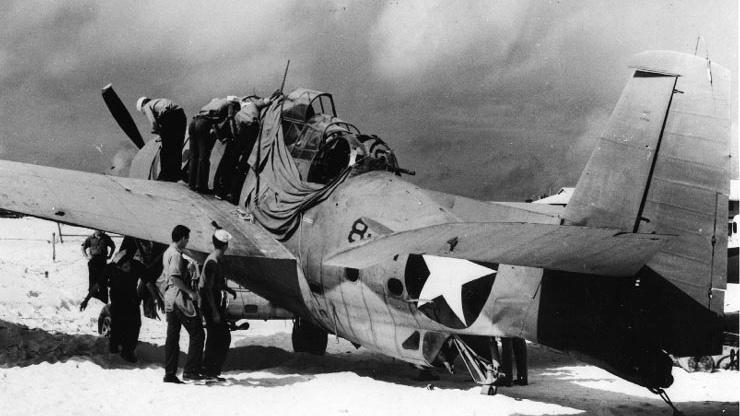
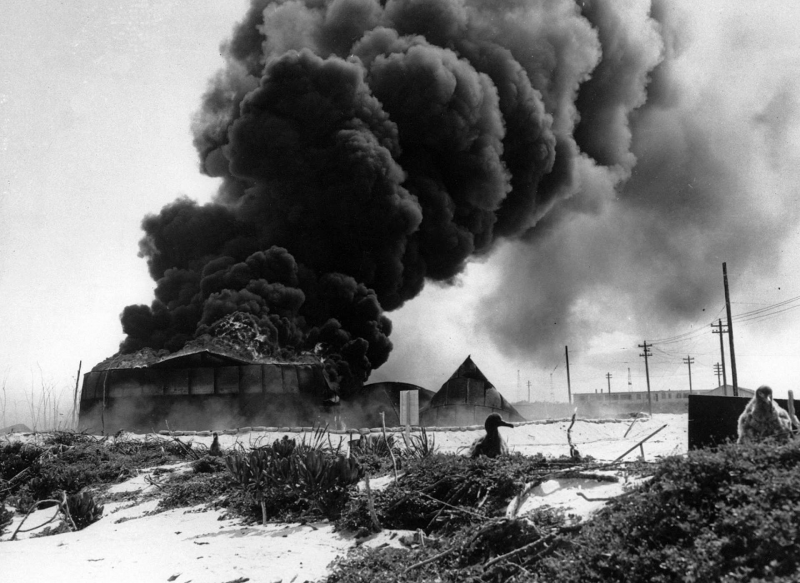
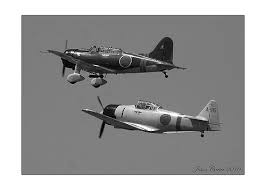

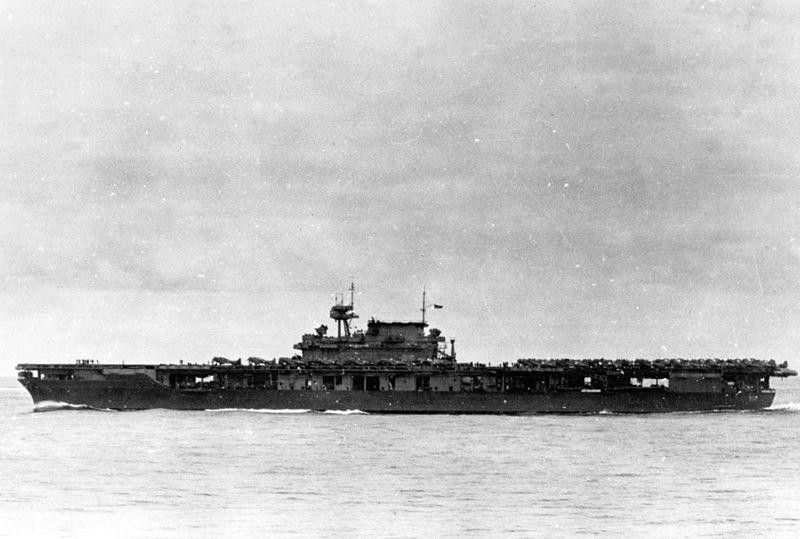

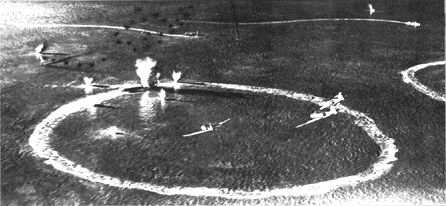
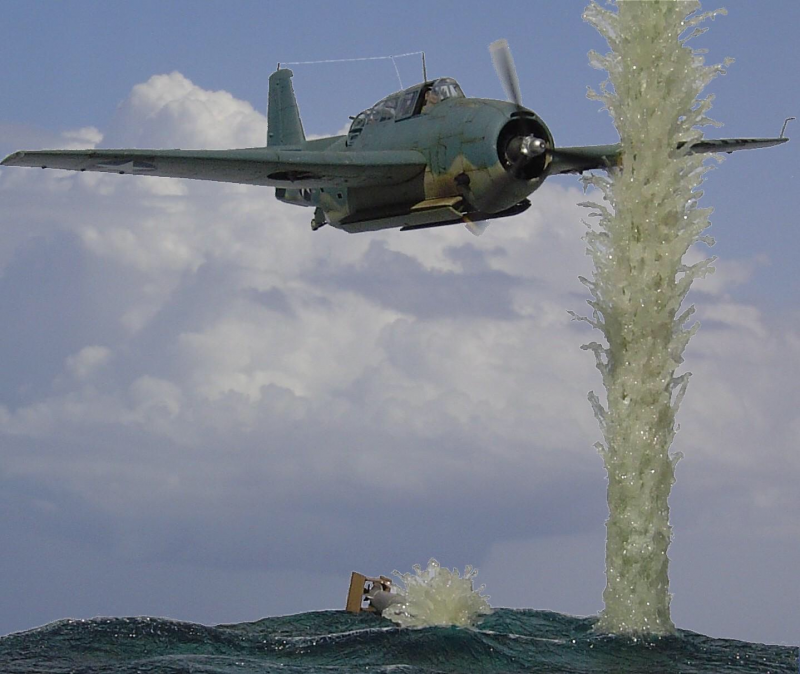
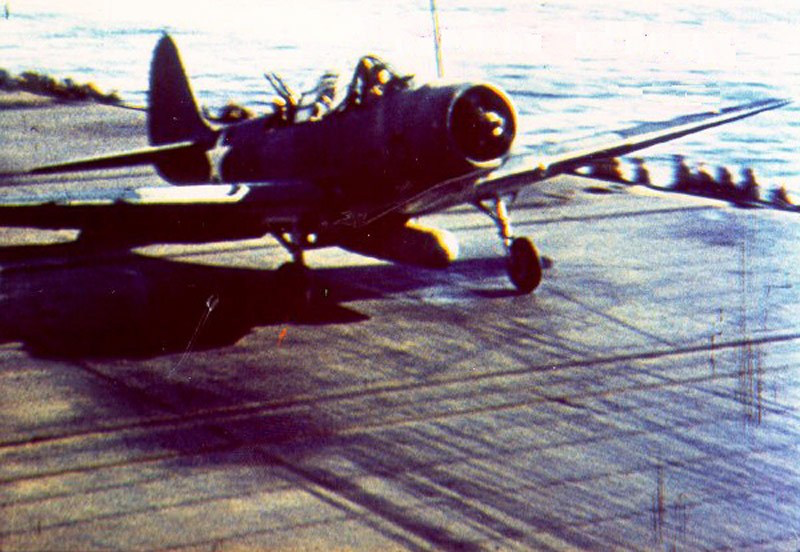
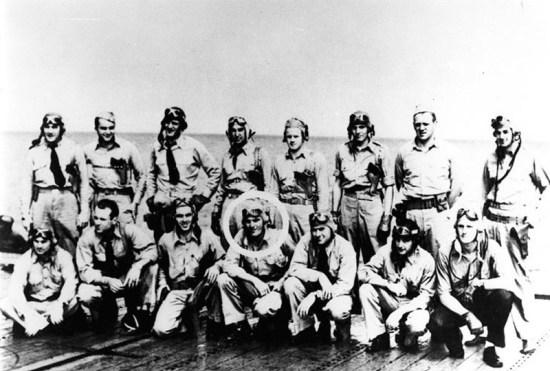
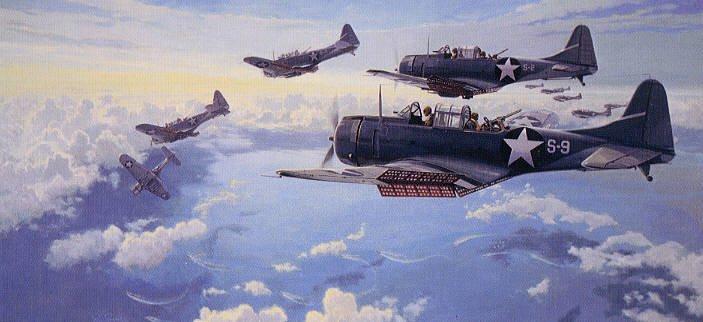

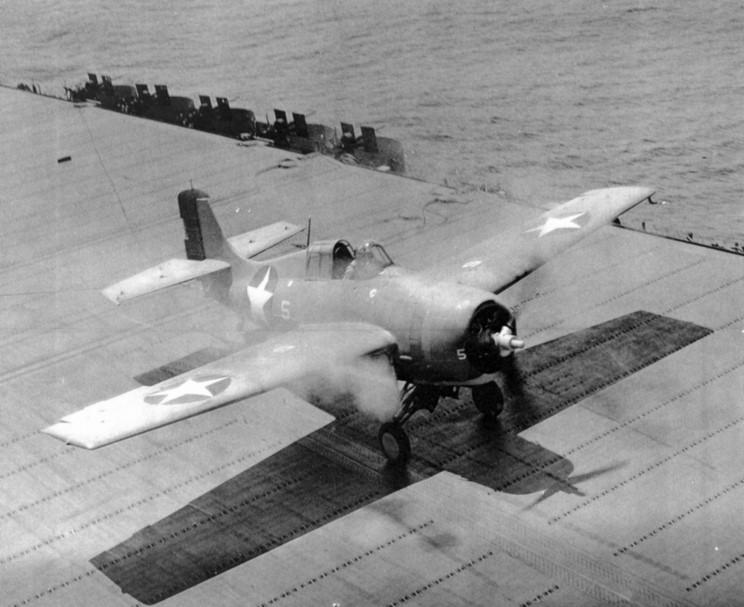

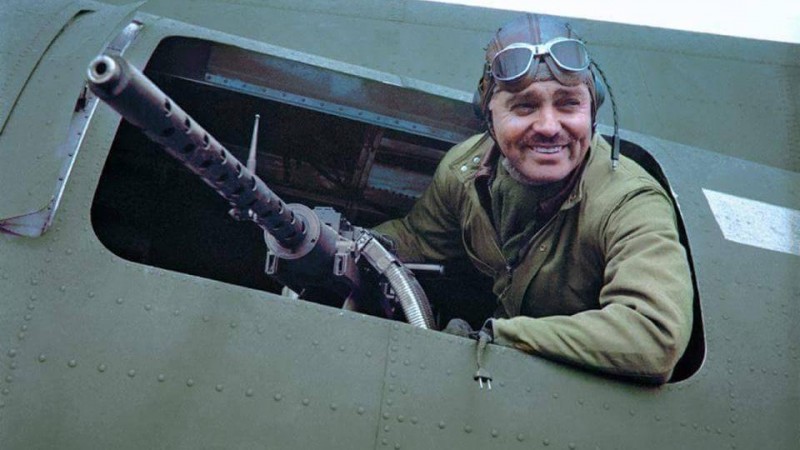
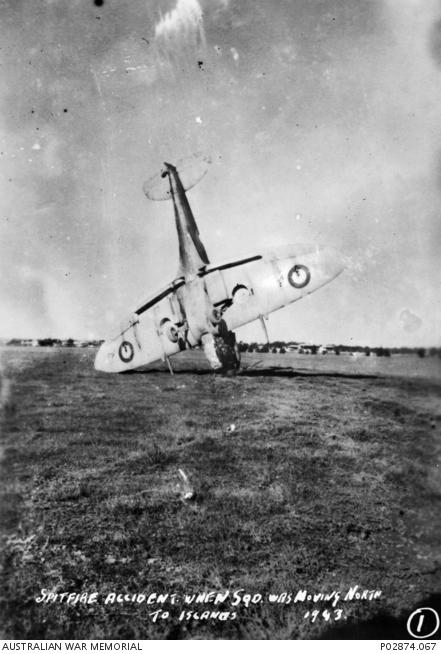
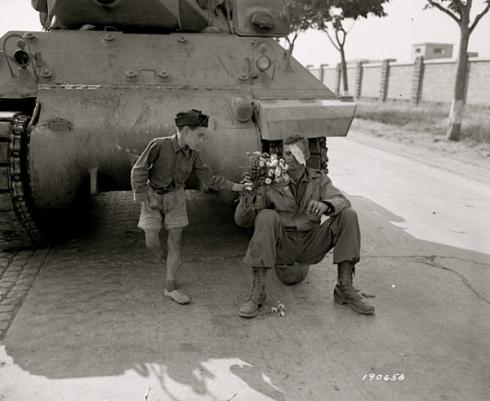
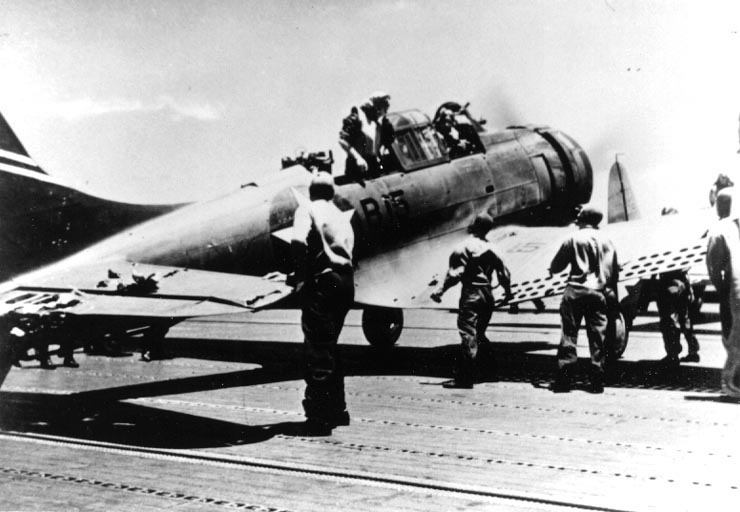
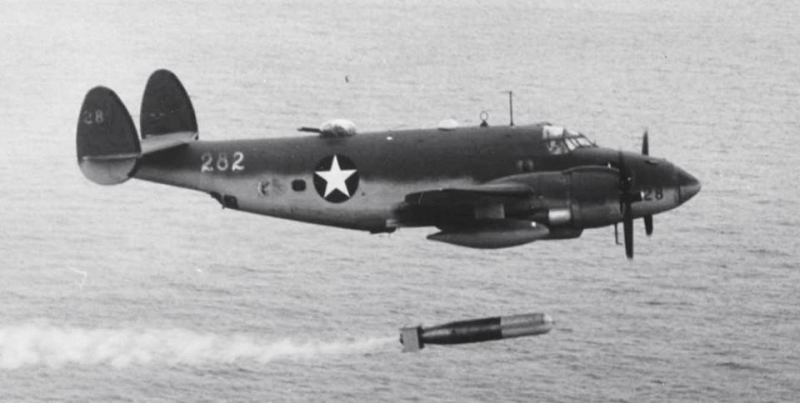
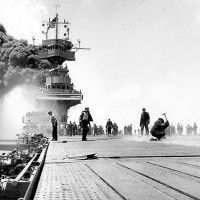
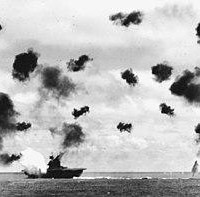
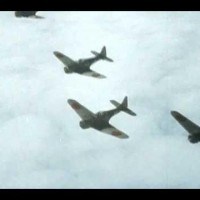
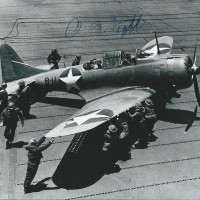

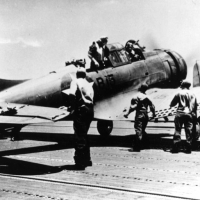

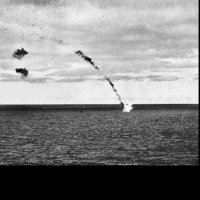
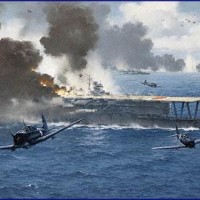
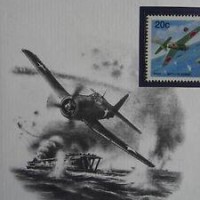

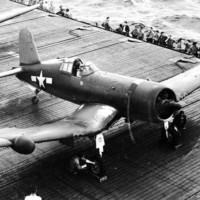
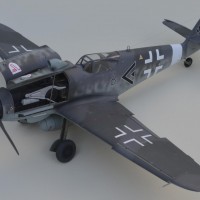
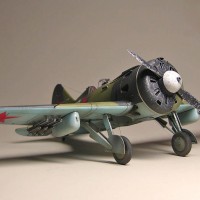
I always like the fact that Gable was in his 40s when he volunteered for the USAAF. When he was there in the "dark days" the 8th AF had trouble getting replacements, and after a unit suffered heavy losses a man could return to his barracks to be faced with the empty cots of his friends for days if not weeks. One gunner left alone in a barracks for a month shot himself. When it came time for Gable to return to the states, he had an interview with General Eaker, 8th AF commander and told him if he didn't have that policy changed by the time Gable got on the airplane to go home, "I am going to Washington, General, and I am going to hold a press conference on the capitol steps, and I am going to tell America how their sons are being treated over here. And you know the press will attend if I do." Gable left three days later, and that morning the new "full breakfast table" policy was in effect. He used his star power to take care of the guys who couldn't say anything.
Very interesting side note Tom. Thanks for that.
I always liked Gable. Like him even more now.
Thanks, Tom.
Thanks David for another great review of history!
Thanks, Gary. You want a review, Tom’s your guy.
Gable begged his buddy Hap Arnold to give him a combat assignment...when Hap reluctantly gave in Gable got in a couple of missions with Billy Wilder's film crew i believe...on two missions he said slugs were zipping around his head inside the fuselage and when he thought of Hitlers reward out for him he cried for his mommy and Hap sent him back to gunnery school in Florida as head instructor...he wasn't any big hero like so many others ...photo taken Tyndall AFB Florida...just an average "joe"
1 attached image. Click to enlarge.
I know very little indeed about the PTO, especially US operations. I know the overall picture but you’re bringing specific information and imagery that makes it all very real. I have to say that your narration on that piece today filled me with dread all the way through, very tense and poignant. I shall be investing in further literature on this subject and am very curious to learn more. Thanks for another excellent OTD as always.
Brilliant.
Cheers, Greg. Very pleased to have you check in.
Thanks, Simon, much appreciated comments and very nice to hear from you!
As always, great historical information David!
Another great OTD David. I’d never seen those photos of the Wildcats guns firing on deck, further proof that a flight deck is one of the most dangerous places in the world.
Amazing to think that this pivotal battle took place barely 6 months after Pearl Harbour!
One of the many cool things I got to do in the Navy was during my first year as a Chief Petty Officer. During June one year our CO and Command Master Chief organized a meet and greet with Midway veteran CPOs in the Chiefs Mess on NAS North Island. There were paintings, maps and photographs, and the men told us about what those days were like for flight deck crews. Pretty cool.
All those spinning props, I wonder what the accident rate was.
Another fine mes ... er, OTD you've gotten us into, David! LoL!
Always trust you to cheer up a baaaaaad day, Jeff.
Cheers, my friend.